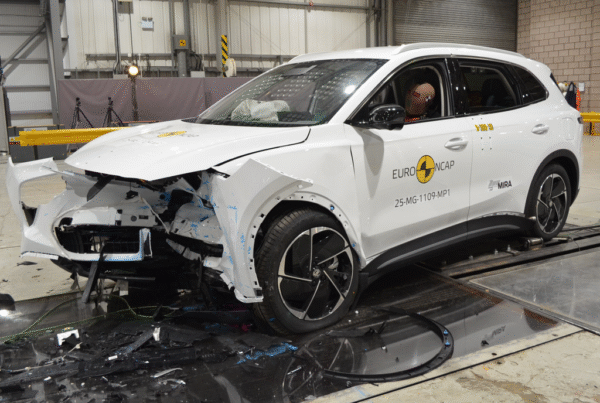To recap from Part 1 and 2, I’ve covered the ingredients & recipe for creating a safe mobile workplace and covered the first two ingredients: –
Ingredients: –
- Fit-for-purpose 5 star vehicles
- Driver vehicle induction
- Driver policies
- Compliance process, and
- Safety culture
Recipe: –
- Select a fit-for-purpose 5 star vehicle,
- Create a driver induction process to explain how the vehicle works,
- Have the driver review the organisations driver policies that explain how to use the vehicle, and
- Give them the keys to the vehicle.
This week I’ll cover Driver Policies which can be broken into two principal types, Vehicle Usage Operational Policies, and Driver Risk Management Policies.
There is a plethora of policies designed to guide a driver in the correct and safe use of a vehicle underpinned by the applicable road rules operating in each state. Often these policies are crafted into a driver handbook and given to the driver at commencement of their employment, never to be referred to again.
Whilst many of these policies are common sense, as it turns out, common sense isn’t that common!
I do not intend to discuss each policy at length, but I will touch on some key elements as organisations come in many shapes and sizes with differing needs and thresholds whilst the key elements might not be that different.
My final point before starting, regardless of who owns the vehicle, an organisation is responsible for providing a safe mobile workplace. When crafting your own policies it is best practice to ensure the policies are applicable to any vehicle whilst being used for work purposes. This includes organisational owned and or leased vehicles, novated leased vehicle and of course grey fleet vehicles.

Vehicle Usage Operational Policies
These policies are designed to outline the conditions for using an organisations vehicle and how it’s to be managed operationally.
- Authority to drive policy
Generally, authorises the allocated driver or sometimes others to use the vehicle based on agreed conditions. For instance, a family member or other person might be able to drive the vehicle if the allocated driver is incapacitated for some reason.
- Vehicle condition policy (clean and tidy)
Seems simple enough, you should keep your vehicle clean and tidy.
- Smoking policy
No, winding down your window and blowing smoke in that direction isn’t good enough.
- Private usage and logbook policy
Outlines to what extent if any private usage is allowed and may require a manual or digital logbook to be maintained to track private usage.
- Infringement management policy
Outlines what drivers must do if they receive a traffic infringement or parking ticket.
- Telematics policy
Outlines what information is being collected and stored through an in-vehicle management system (telematics). It is likely to cover how the information is used and the drivers right to privacy.
- Mobile phone policy
The safest mobile phone policy is Motor On, Mobile Off however organisations embrace an array of what’s okay within the prevailing road rules.
- Fuelcard and fuel management policy
Seems straight forward but it’s likely to cover what to do when the cards not working, you can’t find a fuel station that supports your card and then there’s the emergence of how to charge your EV in fuel stations, other public networks or even at home.
- Maintenance and Repairs policy
Will cover your obligations to have your allotted vehicle repaired in accordance with vehicle manufacturer requirements and what to do with unscheduled repairs and maintenance i.e. your car won’t start etc.
- Tolls and e-tag policy
Not dissimilar to fuel cards without the complexity of recharging an EV.
- Parking policy
This will likely cover how to park safely (remote areas and when you pullover to the side of the road) and of course expense reimbursement.
- Carrying items and load restraint policy
A small item can be a dangerous missile if you’re driving and brought to a sudden stop. It’s also likely to cover other items if your vehicle is designed to carry items.
- Vehicle mass and payload policy
This policy is for vehicles designed to carry items and be mindful that limits apply, you just can’t fill an empty space without repercussions.
- Pre-start vehicle inspection policy
This policy can be as simple as a walk around your vehicle to make sure your tyres are inflated but can include checking indicator lights, water and coolant levels and loads restraints etc.
- Roadside assistance policy
As simple as who you’re going to call when the car won’t start but could include how to safety park on the side of the road etc if your vehicle isn’t working properly.
- Accident management policy
What to do and who to call when you’re involved in a vehicle accident.
Driver Risk Management Policies
These policies are about reducing or mitigating risk rather than the operational control of the vehicle.
- Employing for driver safety policy
This is perhaps one of the most important policies but often overlooked as the vehicle is seen as incidental to the task the driver is being employed for (this isn’t the case when employing professional drivers). This policies if designed for the hiring staff within an organisation and outlines how to employ safe drivers.
- Driver licence checks policy
Remember a driver can lose their license but still be in possession of it. Best practice requires drivers to provide a transcript of their infringements during their annual performance review. The transcript is obtained from their state based licencing authority and the driver is generally reimbursed for its cost.
- Vehicle induction policy
This was covered in part 2 of creating a safe mobile workplace last week.
- Drugs and alcohol policy
This policy will cover alcohol, prescription and illegal drugs and may include obligations for drivers to be routinely tested etc.
- Driver distraction policy
Driver distraction includes anything that takes your eyes and focus off the road. Eating, listening to music or even other passengers can cause distraction. The policy will seek to educate the dangers of distraction and advise the organisations rules.
- Journey management policy
This will likely take into consideration long journeys, long days, using multiple types and transport and short journeys. Once again seeking to educate and advise the organisations rules.
- Fatigue management policy
Research shows that being awake for around 17 hours has a similar effect on your driving as a blood alcohol concentration (BAC) of 0.05. Further, fatigue-related crashes are twice as likely to be fatal. This policy is about education and outlining the organisations rules.
- Speed and adverse conditions policy
On a dry road with good tyres, it takes around 20 metres to stop when travelling at 60km’s however in the wet this distance increases by almost 50% to 29 metres. This policy is about educations and outlining the organisations rules.
I’ve now covered the first three ingredients, Fit-for-Purpose 5 Star Vehicle, Driver Vehicle Induction and Driver Policies. Next week (Part 4), I will explore the role of Compliance Process in creating a safe mobile workplace and finally Part 5 will cover Safety Culture.


















